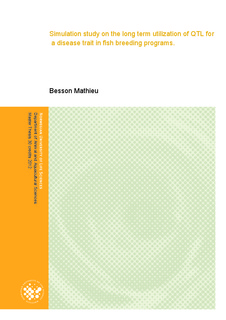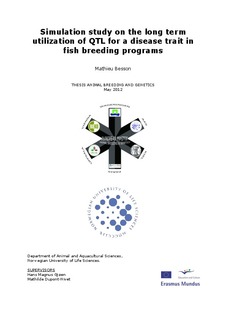| dc.description.abstract | The aim of this study was to investigate, through stochastic simulation, the potential
of using genome information and more particularly, information on the identified IPN
resistance QTL in salmon breeding program in Norway. The breeding goal of the simulation
was composed of two traits. The first trait was measured on the selection candidates as a
growth rate whereas the second was measured only on full-sibs of the breeding candidates.
The IPN resistance QTL had a very strong effect and was responsible for 83% of the genetic
variation. Thus, the potential of using GAS was also tested on a QTL with a small effect only
responsible for 20% of the genetic variation. Different values for genetic correlation between
these two traits have been tested, 0 and -0.36. The genetic model assumed for the second trait
was composed of a QTL segregating together with polygenes. Thus, two schemes were
implemented, Gene-Assisted Selection (GAS) - which takes into account QTL information -
and Standard Phenotypic Selection (PHE). The genetic gain from GAS and PHE obtained by
combining BLUP EBVs and optimum contribution were compared at the same rate of
inbreeding. The results showed that GAS led to a faster fixation of the favourable allele and
achieved more gain for the second trait in short-term than the PHE. This increased gain is due to the utilization of the optimum contribution procedure. However, after the fixation time, the genetic gain was not maintained and resulted in a long-term loss compare to PHE. In previous
publications, it has been showed that using optimization of the weight given to the QTL in
Optimized Gene-Assisted selection (GAO) had an effect on avoiding long-term loss.
Therefore, it could be interesting to implement GAO in salmon breeding program for the IPN
resistance QTL. | no_NO |

